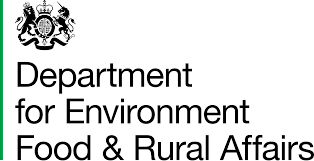PRESS RELEASE : Government sets out plan to reduce water pollution [November 2022]
The press release issued by the Department for Environment, Food and Rural Affairs on 25 November 2022.
Plans will benefit protected wildlife sites and create new habitats for nature.
New plans to help safeguard England’s precious protected sites by driving down nutrient pollution and allowing for the construction of sustainable new homes for families across the country were announced by the Government today.
Nutrient pollution is an urgent problem for freshwater habitats and estuaries which provide a home to wetland birds, fish and insects. Increased levels of nutrients like nitrogen and phosphorus can speed up the growth of certain plants, disrupting natural processes and devastating wildlife. While the government has taken substantial steps to tackle the issue, today’s measure will fast track progress in hotspot areas while unlocking homebuilding across the country.
Due to excess levels of nutrients in certain English water catchments and as result of complex and bureaucratic EU-derived domestic legislation and case law, Local Planning Authorities can only approve a plan or a project if they are certain it will have no negative effect on legally protected sites for nature.
Natural England, in its statutory role as an adviser on the natural environment, has advised a total of 74 Local Planning Authorities on the nutrient impacts of new plans and projects on protected sites where those protected sites are in unfavourable condition due to excess nutrients.
Government plans announced today will see:
- A new legal duty on water companies in England to upgrade wastewater treatment works by 2030 in ‘nutrient neutrality’ areas to the highest achievable technological levels.
- A new Nutrient Mitigation Scheme established by Natural England, helping wildlife and boosting access to nature by investing in projects like new and expanded wetlands and woodlands. This will allow local planning authorities to grant planning permission for new developments in areas with nutrient pollution issues, providing for the development of sustainable new homes and ensuring building can go ahead. Defra and DLUHC will provide funding to pump prime the scheme.
Today’s measures will not only tackle the long-term issue of nutrient pollution by significantly reducing pollution from existing homes in sensitive areas. Developers will be able to purchase ‘nutrient credits’ which will discharge the requirements to provide mitigation.
Natural England will accredit mitigation delivered through the Nutrient Mitigation Scheme, enabling Local Planning Authorities to grant planning permission for developments which have secured the necessary nutrient credits. This will ensure developers have a streamlined way to mitigate nutrient pollution, allowing planned building to continue and creating new habitats across the country.
These plans build on our comprehensive plan to significantly reduce water pollution, including proposed targets under the Environment Act to reduce the key sources of river pollution; a plan for the largest water company infrastructure project ever to reduce discharges from storm overflows; new funding to the Environment Agency to increase farm inspections to at least 4,000 inspections a year by 2023 and new farming schemes that will reward farmers and land managers for environmental actions, such as introducing cover crops and buffering rivers, to reduce run-off.
Environment Secretary George Eustice said:
The plans we have announced today will protect England’s wildlife and precious habitats from the impacts of nutrient pollution, whilst ensuring communities receive the new homes they need.
This is just one part of ongoing Government action to improve water quality across the country, from targets in our world-leading Environment Act to action on storm overflows.
Levelling Up Secretary Greg Clark said:
It is essential that new homes do not impair the quality of our rivers, streams and wetlands. These measures will ensure the development can take place, but only where there is practical action taken to protect our precious aquatic habitats.
Natural England chair Tony Juniper said:
Wetlands and estuaries are home to a wide variety of internationally-important wildlife species, from wading birds to insects and from fish to special plants. Pollution from excess nutrients is causing serious damage to many of these fragile places and if we are to meet our national targets for Nature recovery it is vital that we take concerted, coordinated action to protect them.
The duty on water companies and the Nutrient Mitigation Scheme mark significant steps forward, and will help join up the various approaches to improving water quality and bring about multiple other benefits. They will provide the tools needed to help planning authorities, developers and water and land managers to both build new homes and support the healthy rivers and lakes that are vital for restoring Nature and creating beautiful places for everyone to enjoy.
The new legal duty on water and sewerage companies in England to upgrade certain wastewater plants will be introduced via a Government amendment to the Levelling Up and Regeneration Bill. We want these improvements to be factored in for the purposes of a Habitats Regulation Assessment.
These upgrades will need to be made in a way that tackles the main nutrient(s) causing pollution at protected wildlife sites, for example the addition of metal salts to wastewater, which can be used in combination with wetlands and reedbeds to improve the performance of treatment works.
Where possible, the Government will work with water companies to identify where these upgrades could be accelerated and delivered sooner. Our proposed Environment Act target to tackle wastewater pollution across the country will see upgrades brought in elsewhere in addition to those required by the new duty on companies, on a slightly longer timeframe.
The Nutrient Mitigation Scheme will create new wetlands and woodlands in partnership with green groups and other privately led nutrient mitigation schemes. It follows DLUHC’s initial £100,000 (per catchment) package of support for planning authorities.
This national scheme will support investment in new habitats which will ‘soak up’ or mitigate the impacts of unavoidable nutrient pollution. These new or expanded wildlife habitats will also increase people’s access to nature.
The scheme will be open to all developers, with priority given to smaller builders who are most affected. Developers can also continue to put their own mitigation schemes in place should they choose. Natural England will work with, not crowd out, new and existing private providers and markets for nutrient offsets wherever they exist.
The scheme is due to open in the Autumn. All affected areas can continue to access practical support from the government and Natural England in meeting nutrient neutrality requirements. Natural England will deliver the scheme by establishing an ‘Accelerator Unit’, with the support of Defra, DLUHC, the Environment Agency and Homes England.
This announcement will support the delivery of the tens of thousands of homes currently in the planning system, by significantly reducing the cost of mitigation requirements. The mitigation scheme will make delivering those requirements much easier for developers.
Update on the Nutrient Mitigation Scheme – November 2022
Natural England has been working closely with Defra and DLUHC, alongside the Environment Agency, Forestry Commission, Homes England, the Planning Advisory Service and Local Planning Authorities (LPAs) to develop the scheme across affected catchments in England. The first mitigation projects are currently being negotiated with two partners in the Tees catchment. Investment in feasibility studies in five further catchments is underway to determine the schemes next mitigation sites. Natural England will invite applications from developers for mitigation credits in the Tees before the end of March 2023.
From December 2022, Natural England will approach landowners in a targeted way to invite them to offer their land as potential sites for nutrient mitigation. These sites will start to provide the mitigation needed by LPAs and developers, and we will expand across the country to facilitate building thousands of new homes as well as making a major contribution to nature recovery through the creation of new wetlands.
Credits from the government backed scheme will be offered in batches which any developers requiring credits can apply for. Where demand for credits exceeds supply, applications will be prioritised to minimise nutrient neutrality related delays to development, to enable development of the most homes most quickly, to facilitate small and medium enterprises, and to support the delivery of affordable and social housing. Information for developers on credit availability and price will be released ahead of the first credit sales.



